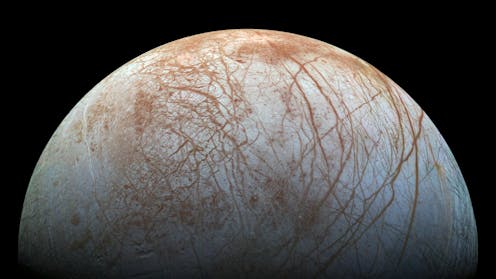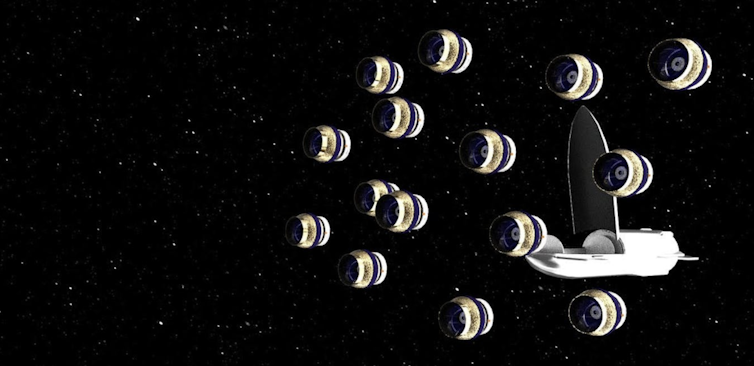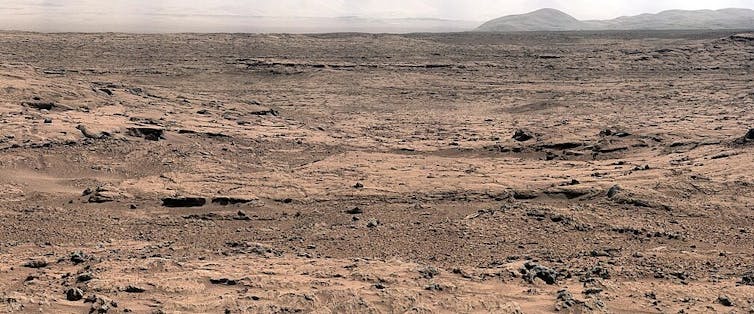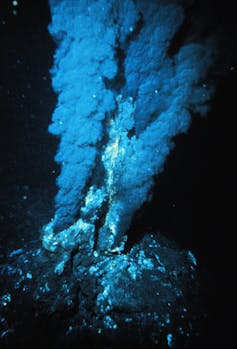New model helps to figure out which distant planets may host life
As NASA rolls out more powerful telescopes in the future, scientists will need a way to determine where to point them. A new approach could help.

The search for life beyond Earth is a key driver of modern astronomy and planetary science. The U.S. is building multiple major telescopes and planetary probes to advance this search. However, the signs of life – called biosignatures – that scientists may find will likely be difficult to interpret. Figuring out where exactly to look also remains challenging.
I am an astrophysicist and astrobiologist with over 20 years of experience studying extrasolar planets – which are planets beyond our solar system.
My colleagues and I have developed a new approach that will identify the most interesting planets or moons to search for life and help interpret potential biosignatures. We do this by modeling how different organisms may fare in different environments, informed by studies of limits of life on Earth.
New telescopes to search for life
Astronomers are developing plans and technology for increasingly powerful space telescopes. For instance, NASA is working on its proposed Habitable Worlds Observatory, which would take ultrasharp images that directly show the planets orbiting nearby stars.
My colleagues and I are developing another concept, the Nautilus space telescope constellation, which is designed to study hundreds of potentially Earthlike planets as they pass in front of their host stars.

These and other future telescopes aim to provide more sensitive studies of more alien worlds. Their development prompts two important questions: “Where to look?” and “Are the environments where we think we see signs of life actually habitable?”
The strongly disputed claims of potential signs of life in the exoplanet K2-18b, announced in April 2025, and previous similar claims in Venus, show how difficult it is to conclusively identify the presence of life from remote-sensing data.
When is an alien world habitable?
Oxford Languages defines “habitable” as “suitable or good enough to live in.” But how do scientists know what is “good enough to live in” for extraterrestrial organisms? Could alien microbes frolic in lakes of boiling acid or frigid liquid methane, or float in water droplets in Venus’ upper atmosphere?
To keep it simple, NASA’s mantra has been “follow the water.” This makes sense – water is essential for all Earth life we know of. A planet with liquid water would also have a temperate environment. It wouldn’t be so cold that it slows down chemical reactions, nor would it be so hot that it destroys the complex molecules necessary for life.
However, with astronomers’ rapidly growing capabilities for characterizing alien worlds, astrobiologists need an approach that is more quantitative and nuanced than the water or no-water classification.
A community effort
As part of the NASA-funded Alien Earths project that I lead, astrobiologist Rory Barnes and I worked on this problem with a group of experts – astrobiologists, planetary scientists, exoplanet experts, ecologists, biologists and chemists – drawn from the largest network of exoplanet and astrobiology researchers, NASA’s Nexus for Exoplanet System Science, or NExSS.
Over a hundred colleagues provided us with ideas, and two questions came up often:
First, how do we know what life needs, if we do not understand the full range of extraterrestrial life? Scientists know a lot about life on Earth, but most astrobiologists agree that more exotic types of life – perhaps based on different combinations of chemical elements and solvents – are possible. How do we determine what conditions those other types of life may require?
Second, the approach has to work with incomplete data. Potential sites for life beyond Earth – “extrasolar habitats” – are very difficult to study directly, and often impossible to visit and sample.
For example, the Martian subsurface remains mostly out of our reach. Places like Jupiter’s moon Europa’s and Saturn’s Moon Enceladus’ subsurface oceans and all extrasolar planets remain practically unreachable. Scientists study them indirectly, often only using remote observations. These measurements can’t tell you as much as actual samples would.

To make matters worse, measurements often have uncertainties. For example, we may be only 88% confident that water vapor is present in an exoplanet’s atmosphere. Our framework has to be able to work with small amounts of data and handle uncertainties. And, we need to accept that the answers will often not be black or white.
A new approach to habitability
The new approach, called the quantitative habitability framework, has two distinguishing features:
First, we moved away from trying to answer the vague “habitable to life” question and narrowed it to a more specific and practically answerable question: Would the conditions in the habitat – as we know them – allow a specific (known or yet unknown) species or ecosystem to survive?
Even on Earth, organisms require different conditions to survive – there are no camels in Antarctica. By talking about specific organisms, we made the question easier to answer.
Second, the quantitative habitability framework does not insist on black-or-white answers. It compares computer models to calculate a probabilistic answer. Instead of assuming that liquid water is a key limiting factor, we compare our understanding of the conditions an organism requires (the “organism model”) with our understanding of the conditions present in the environment (the “habitat model”).
Both have uncertainties. Our understanding of each can be incomplete. Yet, we can handle the uncertainties mathematically. By comparing the two models, we can determine the probability that an organism and a habitat are compatible.
As a simplistic example, our habitat model for Antarctica may state that temperatures are often below freezing. And our organism model for a camel may state that it does not survive long in cold temperatures. Unsurprisingly, we would correctly predict a near-zero probability that Antarctica is a good habitat for camels.

We had a blast working on this project. To study the limits of life, we collected literature data on extreme organisms, from insects that live in the Himalayas at high altitudes and low temperatures to microorganisms that flourish in hydrothermal vents on the ocean floor and feed on chemical energy.
We explored, via our models, whether they may survive in the Martian subsurface or in Europa’s oceans. We also investigated if marine bacteria that produce oxygen in Earth’s oceans could potentially survive on known extrasolar planets.
Although comprehensive and detailed, this approach makes important simplifications. For example, it does not yet model how life may shape the planet, nor does it account for the full array of nutrients organisms may need. These simplifications are by design.
In most of the environments we currently study, we know too little about the conditions to meaningfully attempt such models – except for some solar system bodies, such as Saturn’s Enceladus.
The quantitative habitability framework allows my team to answer questions like whether astrobiologists might be interested in a subsurface location on Mars, given the available data, or whether astronomers should turn their telescopes to planet A or planet B while searching for life. Our framework is available as an open-source computer model, which astrobiologists can now readily use and further develop to help with current and future projects.
If scientists do detect a potential signature of life, this approach can help assess if the environment where it is detected can actually support the type of life that leads to the signature detected.
Our next steps will be to build a database of terrestrial organisms that live in extreme environments and represent the limits of life. To this data, we can also add models for hypothetical alien life. By integrating those into the quantitative habitability framework, we will be able to work out scenarios, interpret new data coming from other worlds and guide the search for signatures of life beyond Earth – in our solar system and beyond.
Daniel Apai receives funding from NASA, Heising-Simons Foundation, Department of Defense, Space Telescope Science Institute, and the University of Arizona, and leads the NASA-funded Alien Earths astrobiology research team that developed the framework described here. He is affiliated with the Steward Observatory and Lunar and Planetary Laboratory of The University of Arizona.
Read These Next
AI’s errors may be impossible to eliminate – what that means for its use in health care
Many health symptoms can be caused by multiple illnesses – if AI can’t tell the difference between…
Polytechnic universities focus on practical, career-oriented skills, offering an alternative to trad
Polytechnic universities try to incorporate skills-based learning into education.
The Ivies can weather the Trump administration’s research cuts – it’s the nation’s public universiti
While headlines focus on Harvard and Columbia, state universities train far more STEM students, power…





